With the first Indianapolis 500 taking place in 1911 and with 108 years of history (the race wasn’t conducted during wartimes), the Indy 500 has provided countless memorable moments.
We ranked the 25 most memorable moments, from 25-to-1, and we’ll count them down daily all the way up until May 25th, when the 109th Indianapolis 500 goes green (coverage begins 10 a.m. ET on FOX).
These moments are certain to evoke memories — some that will make you smile, some that might make you laugh, even some that might make you cringe. But all memorable.
Check back daily for the next most memorable moment. Today on our list is No. 9.
No. 25: Jim Clark’s 1965 victory
The 1965 Indianapolis 500 will go down in history for a couple of reasons. Jim Clark’s victory in a Ford-powered Lotus marked the first time that a rear-engine car won the race. That wasn’t a surprise in the sense that 27 of the 33 cars in the event were rear-engine cars as teams and drivers were able to match the power and balance of the cars to make them faster than front-engine roadsters.
Clark, thanks to Ford, also had the Wood Brothers of NASCAR fame pitting his car. They never had to change tires but they had to fuel it twice, and their fueling methods were much faster than their competitors.
No. 24: Newgarden passes Ericsson for 2023 victory
The 2023 Indianapolis 500 will go down as one of the most controversial finishes. Instead of letting the race end under caution when a late-race crash typically would have resulted in the race never getting restarted, series officials opted to red flag the race — the third red flag in the final 15 laps.
Marcus Ericsson was leading at the time but was viewed as a sitting duck for the one-lap dash to the finish. And he was as Josef Newgarden made the pass on the backstretch of the final lap for his first of what would be back-to-back Indy 500 victories.
No. 23: Milk tradition is born in 1936
Louis Meyer won his third Indianapolis 500 in 1936, and it was the start of a couple of traditions. The first was somewhat unintentional. Someone gave him a bottle of buttermilk to drink following the race. That started the famed tradition of drinking milk in victory circle.
The other was that it was the first race for the Borg-Warner Trophy, which remains the trophy given to the Indianapolis 500 winner.
No. 22: Al Unser becomes oldest winner
Al Unser didn’t have a ride for the 1987 Indianapolis 500. But when Danny Ongais suffered a concussion in a wreck, Roger Penske needed a driver. So he called Unser. He also needed a car. Penske found one — a year-old car the team had on display at a Pennsylvania hotel near their shop.
Unser was no stranger to winning at Indianapolis as he had three career victories. He made it a historic fourth win in 1987, and at age 47 years, 360 days — he remains the oldest driver to win the Indy 500.
No. 21: Scott Goodyear passes pace car
Memorable moments come in all forms, including disappointment. Disappointment and shock was what Scott Goodyear felt in 1995. He had led 42 laps and appeared to have the strongest car late in the race. But on a restart with 10 laps remaining, Goodyear passed the slow-running pace car before the pace car got to pit road. Goodyear stayed on the track despite being black-flagged.
Jacques Villeneuve won the race. Goodyear was credited with 14th, five laps down.
No. 20: Mario Andretti’s 1969 victory
Mario Andretti, considered one of the world’s greatest race-car drivers, earned his only win in the Indianapolis 500 in 1969. He led 116 of the 200 laps and won by a margin of 113 seconds over Dan Gurney.
Andretti became the first driver to win both the Daytona 500 (1967) and Indianapolis 500. A.J. Foyt would join him on that list when Foyt won at Daytona in 1972.
No. 19: F1 champs in the spotlight
The Indianapolis 500 has always attracted some of the world’s most accomplished drivers, and that certainly was the case in 1993. With 1992 Formula 1 champion Nigel Mansell making his debut, he led 34 laps.
Two other F1 champions who had become Indy staples — Mario Andretti (1978 F1 champ) and Emerson Fittipaldi (1972, 1974) — spent plenty of time out front. Andretti led 72 laps. Fittipaldi led 16 laps, including the most important one, as he captured his second Indy 500 victory.
Afterward, Fittipaldi made a controversial decision — foregoing the traditional milk in victory circle for orange juice from his groves. He later took a sip of milk and issued an apology for initially not following the tradition.
No. 18: Scott Dixon’s scary crash
Scott Dixon walked away from a scary crash on Lap 53 of the 2017 Indianapolis 500. His car collided with the wrecked vehicle of Jay Howard, launching Dixon’s car more than 10 feet into the air. It landed on the inside wall upside-down, shearing the car apart.
Neither driver was seriously injured. Dixon received a walking boot for his foot and ankle following the accident.
No. 17: Tony Stewart finishes sixth in Indy 500 and third in Coke 600
Tony Stewart completed 1,090 miles in his 1999 Indy 500-Coke 600 double and became the first (and still the only) driver to later complete all 1,100 miles in 2001 as he finished sixth in the Indianapolis 500 and third in the NASCAR race in Charlotte.
Stewart, who fought dizziness and exhaustion in 1999, took great pride in the 2001 feat. After getting out of his car, he said: “For those people that had any doubts that I was putting everybody in danger, you’re a bunch of idiots because I was the fastest car on the racetrack at the end.”
No. 16: Willy T. Ribbs becomes first Black driver in race
Willy T. Ribbs overcame four blown engines during the two weeks of practice and qualifying to make the 1991 Indianapolis 500. With the support of actor Bill Cosby and a determined team owner in Derrick Walker, Ribbs became the first Black driver to compete in the race. Six years earlier, he had come to Indianapolis on a deal with boxing promoter Don King, but the car never got up to speed.
An accomplished sports-car racer who had competed in eight INDYCAR races in 1990, Ribbs suffered another engine failure just five laps into the race and finished 32nd.
No. 15: Janet Guthrie races as first woman in Indy 500
Janet Guthrie became the first woman to compete in the Indy 500 as she started 26th in the 1977 race. An engine failure ended her day after 27 laps and she finished 29th.
That culminated an incredible year for Guthrie. After she failed to make the 1976 Indy 500 field, she went to Charlotte and became the first woman to compete on a NASCAR oval bigger than 1 mile in length. She finished 15th. That next February, she became the first woman to race in the Daytona 500, where she finished 12th and then followed that up in May by qualifying for the 1977 Indy 500.
No. 14: Helio Castroneves climbs Indy fence for first time
Helio Castroneves had climbed the fence after previous racing wins. But for the first time at Indianapolis, Castroneves climbed the fence in 2001 as he celebrated his 500 victory to the delight of the Hoosier crowd.
The victory didn’t come without controversy as Paul Tracy claimed he had passed Castroneves for the lead before the caution came out on Lap 199. His protests and appeals were denied, and Castroneves kept the victory — the first of four (so far) in the Indy 500.
No. 13: Danica Patrick the first woman to lead laps
It was 20 years ago when Danica Patrick captured the attention of the sports world as she qualified fourth for the 2005 Indianapolis 500, the best starting spot ever for a female driver.
Patrick led 19 laps late in the race and finished fourth, which also was the best for any female driver — until 2009 when Patrick finished third.
No. 12: A.J. Foyt captures elusive fourth Indy 500
A.J. Foyt took the lead on Lap 185 of the 1977 Indianapolis 500 when a crankshaft broke on the dominant car of Gordon Johncock, who had led 129 laps. Foyt led 46 laps in the race, including the final 16 laps, to win his record fourth Indy 500.
It was a feat 10 years in the making after winning his third 500 in 1967. Foyt had won in 1961, 1964 and 1967, so many had wondered if he would ever get that elusive fourth win.
No. 11: The inaugural race in 1911
The first: Ray Harroun won the first Indianapolis 500 in 1911 in front of more than 80,000 spectators. Harroun drove a Marmon “Wasp” and was the only driver in the 40-car field without a riding mechanic.
He completed the 500 miles in 6 hours, 42 minutes, 8 seconds (74.602 mph). The 32-year-old Harroun earned $14,250 for the win and retired from competitive racing following the victory.
No. 10: Rick Mears vs. Michael Andretti on way to fourth Indy 500 win
In 1991, another member joined the four-time club as Rick Mears dueled with Michael Andretti — they traded the lead twice over the final 30 laps — on his way to a fourth Indianapolis 500 victory.
It was another disappointment for Andretti as he watched Mears lead the final 13 laps for his fourth while Andretti, who led 97 laps that day, never won the sport’s biggest race.
No. 9: Helio Castroneves captures fourth Indy 500 and another fence climb
Twenty years after his first win in the Indianapolis 500, Helio Castroneves passed Alex Palou on the frontstretch with two laps to go and held off Palou to earn his fourth 500 victory in 2021.
And, of course, he climbed the fence, just as he did in 2001, 2002 and 2009. The drive for five continues for Castroneves, who will compete in the Indy 500 for Meyer Shank Racing.
No. 8: May 18
No. 7: May 19
No. 6: May 20
No. 5: May 21
No. 4: May 22
No. 3: May 23
No. 2: May 24
No. 1: May 25
Bob Pockrass covers NASCAR and IndyCar for FOX Sports. He has spent decades covering motorsports, including over 30 Daytona 500s, with stints at ESPN, Sporting News, NASCAR Scene magazine and The (Daytona Beach) News-Journal. Follow him on Twitter @bobpockrass.
BEST OF FOX SPORTS’ INDY 500 COVERAGE:
Want great stories delivered right to your inbox? Create or log in to your FOX Sports account, follow leagues, teams and players to receive a personalized newsletter daily!
recommended

Get more from NTT INDYCAR SERIES Follow your favorites to get information about games, news and more


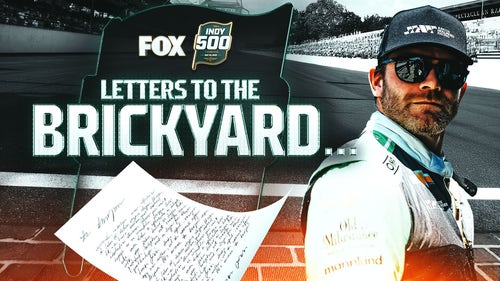
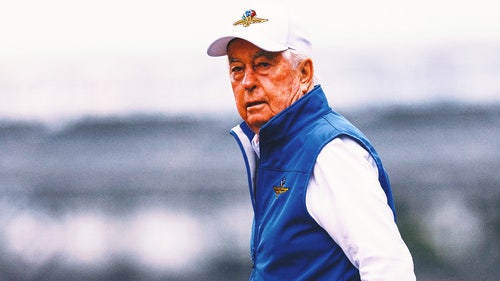
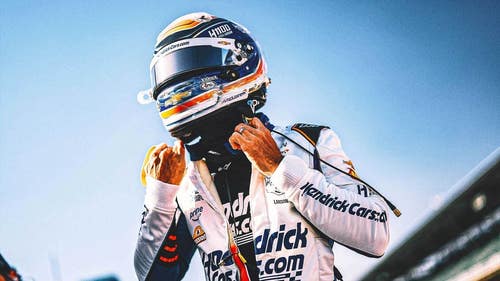
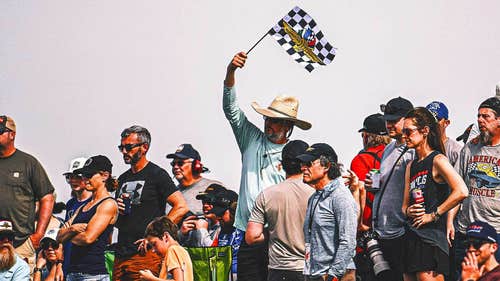
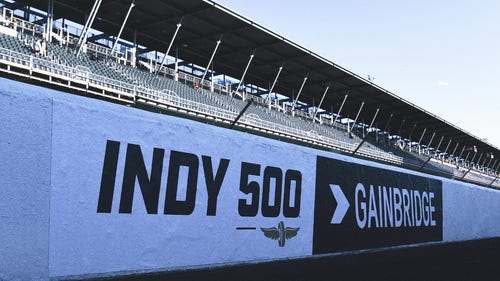
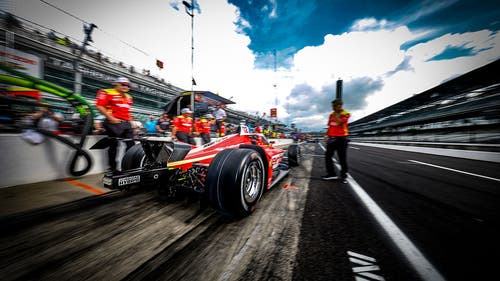
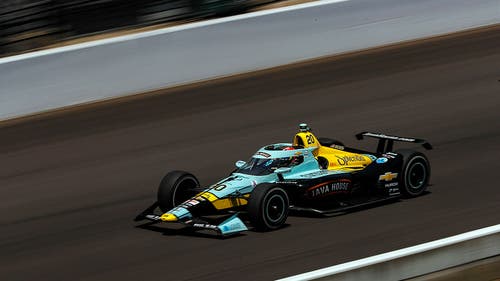
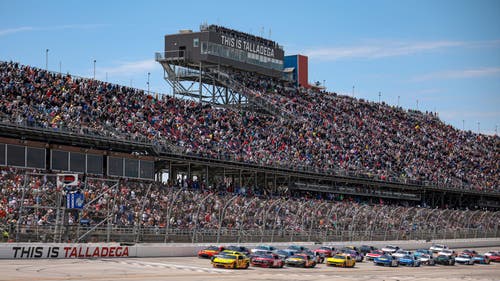
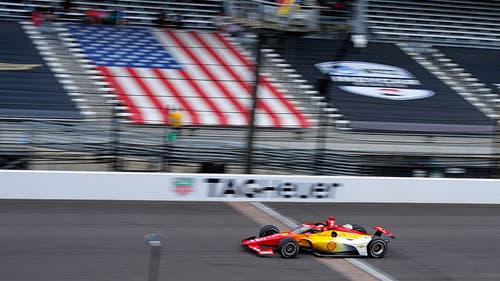


GIPHY App Key not set. Please check settings